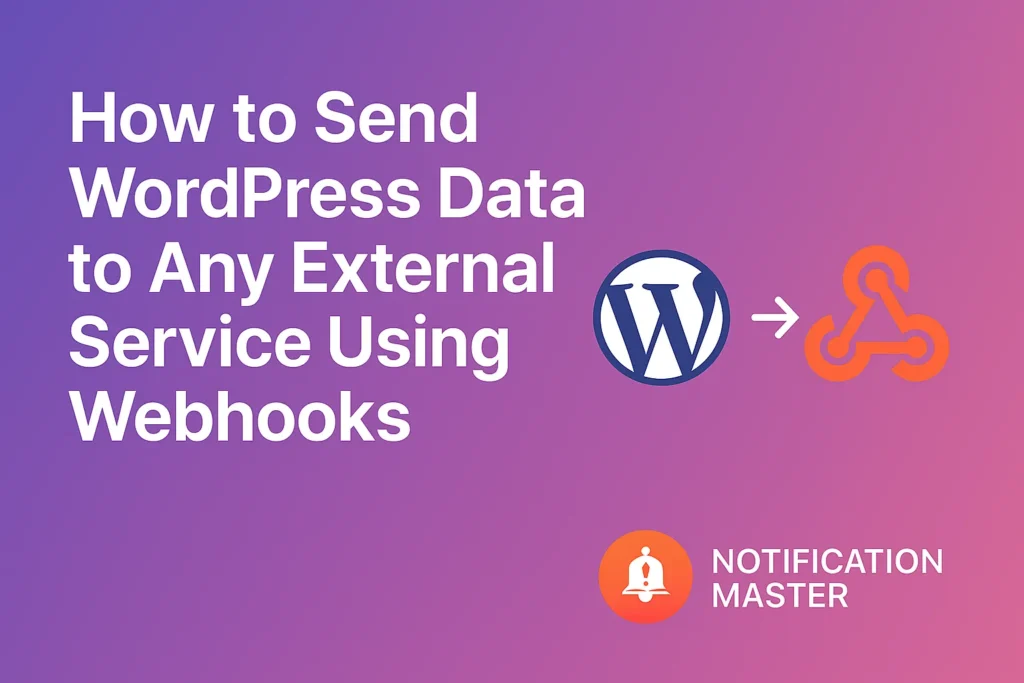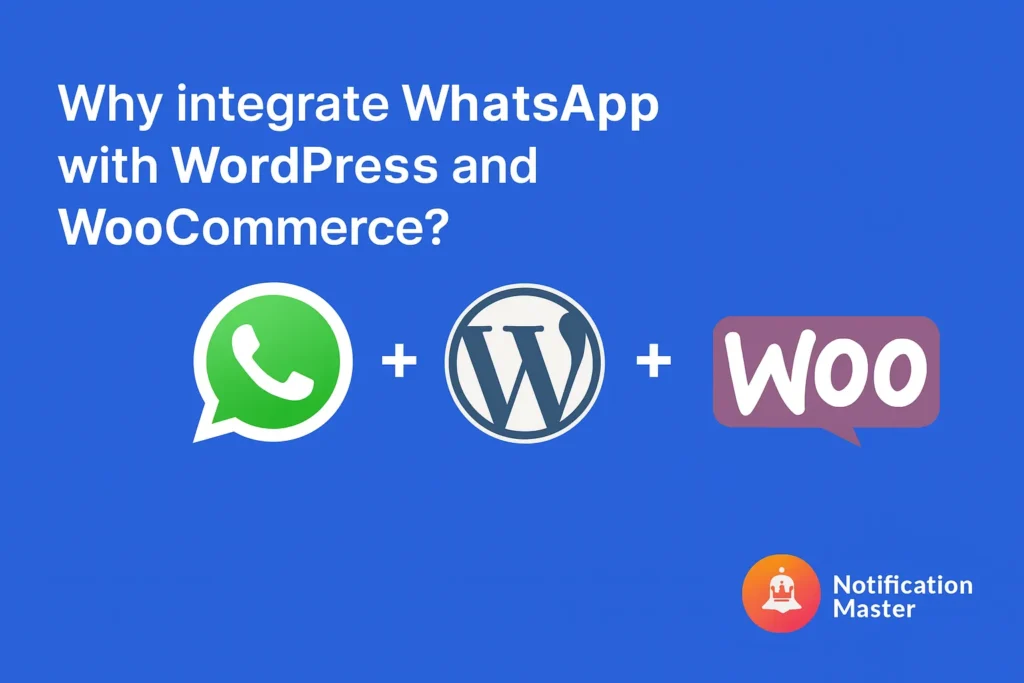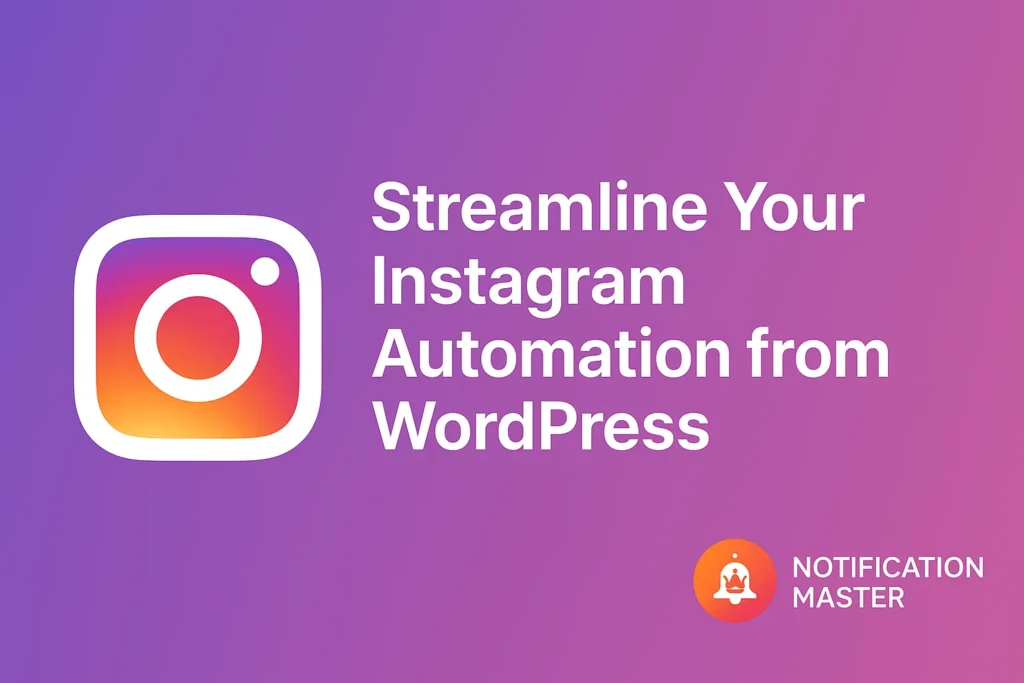Introduction
Need your WordPress site to talk to external apps like Slack, or Notion?
That’s where webhooks come in.
Webhooks let you send real-time data from your website to any service that supports HTTP requests — no middlemen, no delays. And with the Notification Master plugin, setting up a webhook is easier than you think.
What Is a Webhook (and Why It Matters)
A webhook is like a messenger that sends information from your WordPress site to another app or system whenever a specific event happens — like publishing a post, receiving a message, or getting a WooCommerce order.
Instead of manually copying data or relying on third-party tools, you can:
- Push blog titles to a Slack channel
- Send form entries to Google Sheets
- Notify external APIs when your store updates a product
- Trigger CRM actions when users register on your site
It’s automation, made easy.
Why Use Notification Master for Webhooks?
While some webhook tools require technical setups or third-party SaaS tools, Notification Master gives you webhook control directly inside your WordPress dashboard.
✅ Supports any HTTP method – GET, POST, PUT, PATCH, DELETE
✅ Custom headers & body – Add auth tokens, metadata, and merge tags
✅ Flexible formatting – JSON, URL-encoded, and more
✅ Merge tag support – Use dynamic values like {{post.title}}, {{user.email}}
✅ Zero coding required – All done visually inside the plugin
🛠️ Read the full Webhook integration guide
Real Use Cases: Webhooks That Actually Help
Here’s how real creators and businesses are using Notification Master’s webhook integration:
🔁 Sync New Posts to Notion
Send the post title, link, and author to a Notion database every time a new post is published.
📢 Alert Your Team on Slack
Notify your support or marketing team whenever a WooCommerce order is refunded or a product goes out of stock.
👉 Related: Optimize WooCommerce with Notification Master
📊 Log Leads in Google Sheets
Capture data from contact form submissions and log them automatically into a spreadsheet for easy CRM imports or syncing with Zapier.
🛠️ Trigger External Scripts
Need to ping an internal API or external service when a plugin is updated or a theme is changed? Done.
Example: Create a Webhook That Sends Post Info to an External API
With Notification Master, here’s all you need to set up:
- Trigger: Post published
- Method: POST
- URL:
https://example.com/api/new-post - Headers:
Authorization: Bearer XYZ123 - Body (JSON):
{
"title": "{{post.title}}",
"author": "{{post.author}}",
"link": "{{post.url}}"
}
Now every time you publish a post, that data is sent instantly to your external API.
Why This Matters
Automating with webhooks isn’t just about speed — it’s about:
- Reducing errors (no manual data entry)
- Scaling smarter (connect WordPress to your full tech stack)
- Saving time (no jumping between tools)
- Staying flexible (no need to rely on SaaS platforms or limited integrations)
If your business relies on workflows, notifications, or syncing across systems — webhooks are your secret weapon.
Final Thoughts
Webhooks unlock the power to turn your WordPress site into a fully connected hub — talking to every tool you use, in real time.
And with Notification Master, you don’t need to be a developer to set it up. You just choose a trigger, define the endpoint, and let your site do the talking.
Want to explore other automations?
Check out our Instagram integration guide.



